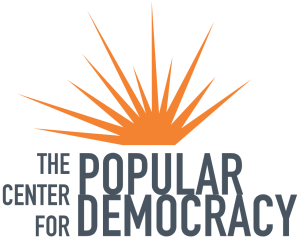“Alone we can do so little; together we can do so much.” The words of one of history’s greatest advocates, Helen Keller, ring as true today as a century ago.
That same recognition of the power of collective impact is one of the elements that makes the Kansas Health Foundation’s Health Equity Partnership Initiative (HEPI) a model for nonprofit advocacy.
Our two organizations — Children’s Alliance of Kansas and Kansas Appleseed Center for Law and Justice — share many priorities with HEPI’s eight other grantees, including a commitment to maximizing the health of all Kansans.
But we weren’t collaborating, leaving tons of potential progress on the table. We weren’t enemies, but we were advancing our individual policy agendas.
In a world where political capital is as scarce a resource as state funding, advocacy is often seen as a zero-sum game. And policymakers have much to gain from sowing division among advocates.
The Kansas Health Foundation has changed that dynamic for the better.
From the beginning, this initiative emphasized strategy-alignment, recognizing that a health equity movement won’t hold together if competition from within is constantly prying it apart.
We are accountable to each other and to the foundation for identifying strategies that allow each organization to pursue its own goals, within a collaborative framework that minimizes conflict and actively seeks opportunities for collective impact.
Consider the example of our two organizations:
Appleseed led a successful juvenile justice reform effort, beginning in 2012 and culminating with the enactment of sweeping reform legislation in 2016.
The Children’s Alliance consistently supported the aims of reform, several members raised concerns about the potential consequences for the state’s already-overburdened foster care system.
While policy differences never devolved into animus, they did serve as a barrier to collaboration.
The Kansas Health Foundation funding provided a forum for us to find common ground. It wasn’t easy, and it wasn’t quick.
The foundation committed considerable time and resources to a strategically driven selection process that made true collaboration among grantees possible.
That began with an objective, third-party assessment of each organization’s strengths and capacity-building needs through TCC Group’s Core Capacity Assessment Tool (CCAT).
But from the beginning, it was about much more than strengthening individual organizations; it was about building a movement to advance health equity.
Those efforts paid off, to the benefit of the health of Kansas children and families. Together, we and our allies successfully advocated for the reversal of Medicaid funding cuts that reduced access to health care for children and families.
Individual advocates were able to document the harm resulting from the Medicaid cuts, with the Children’s Alliance spotlighting the health consequences for children affected by abuse or neglect, and Appleseed widening the lens to show the harm to families statewide.
In isolation, neither organization could have solidified support around a specific policy solution. It was collective advocacy; not just ours, and not just the other grantees, but the wider network of concerned advocates that made it clear to policymakers that reversing the cuts was urgent.
And we recently brought together more than 75 advocates, service providers and academics to address another shared concern: the well-being of vulnerable children and families.
That convening resulted in a consensus agenda for effective implementation of new federal child abuse and neglect prevention legislation. If successful, this effort could contribute to health equity gains for some of Kansas’s most economically disadvantaged families.
We and other grantees have actively collaborated on a range of priorities, including:
- Restoring capacity and stability to the state’s psychiatric residential treatment facilities for children affected by abuse or neglect.
- Expanding Medicaid to strengthen health access for families throughout the state.
- Uniting more than a half-dozen advocates in challenging the state’s Child Welfare Task Force to prioritize child abuse and neglect prevention.
- Supporting directly affected youth and families to speak up in the policy discussions related to foster care and juvenile justice.
We still have differences of perspective and priority on a range of issues. But, due in large part to the collaborative forum provided by the Kansas Health Foundation, we share a commitment to finding common ground to advance policy solutions that improve the health of all Kansas families.
Because what Helen Keller said is true: We can do so much more together.
Christie Appelhanz is executive director of Children’s Alliance of Kansas, and Benet Magnuson is executive director of Kansas Appleseed Center for Law and Justice. Follow @ChristieAppel and @KansasApple on Twitter.
Image by Scott Maxwell. Used under Creative Commons license.

 The
The